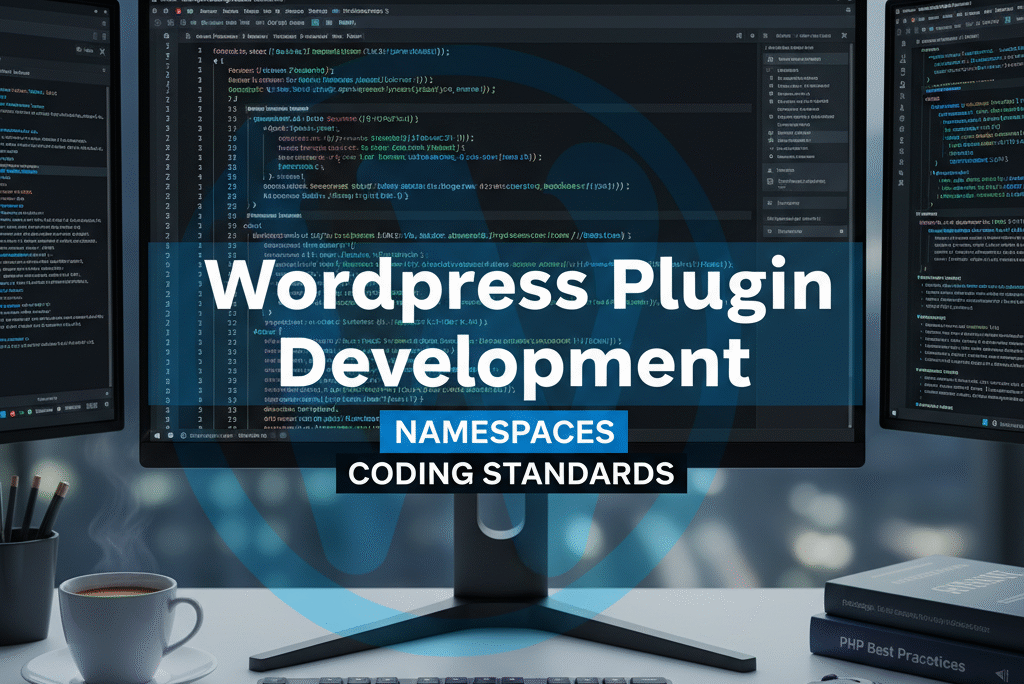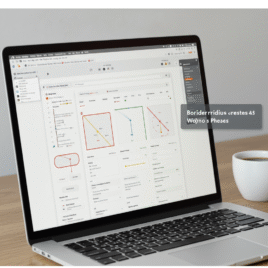Are you a WordPress developer striving to build more robust, maintainable, and scalable plugins? Do you often find yourself wrestling with naming conflicts, deciphering inconsistent codebases, or dreading handing off a project to another developer? If so, you’re not alone. The WordPress ecosystem, while incredibly powerful, can sometimes feel like the Wild West when it comes to code organization and quality.
But what if there was a way to bring order to the chaos? A path to developing plugins that are not only functional but also a joy to work with, easy to extend, and resistant to common pitfalls? That path involves two fundamental pillars of modern PHP development: Namespaces and Coding Standards. Let’s dive deep into how embracing these practices can transform your WordPress plugin development workflow.
Why Namespaces Are Non-Negotiable in WordPress Plugin Development
WordPress, at its core, operates in a global scope. Functions, classes, and variables are typically declared directly in the global namespace. While this simplicity served early PHP applications well, it becomes a significant liability in complex projects, leading to what’s often called ‘global scope pollution.’
Imagine developing a plugin that uses a class named `Logger`. What if another plugin, or even WordPress core itself, decides to use a class with the exact same name? You’ve got a fatal `Cannot redeclare class` error on your hands – a classic naming collision. Historically, developers have resorted to lengthy, often inconsistent prefixes (e.g., `my_plugin_logger`) to mitigate this, but it’s a clunky, error-prone solution.
This is where PHP Namespaces come to the rescue. Namespaces provide a way to encapsulate items (classes, interfaces, functions, and constants) into logical groups, preventing naming collisions and improving code organization. Think of them like a virtual filing system for your code, allowing you to have multiple files with the same name, as long as they’re in different folders.
Implementing Namespaces in Your WordPress Plugin
Adopting namespaces in your WordPress plugin is straightforward, yet incredibly impactful. Here’s a basic approach:
- Define Your Root Namespace: Choose a unique, descriptive root namespace for your plugin (e.g., `MyPlugin\`). This should reflect your plugin’s identity.
- Structure Your Files: Organize your plugin’s files and folders to mirror your namespace hierarchy. For instance, a class `Admin\Settings` would reside in `src/Admin/Settings.php`.
- Declare Namespaces: At the top of each PHP file, declare its specific namespace:
<?php namespace MyPlugin\Admin; class Settings { // ... } - Use Statements: When you need to reference a class from another namespace, use the `use` keyword to import it, making your code cleaner and more readable:
<?php namespace MyPlugin\Core; use MyPlugin\Admin\Settings; class PluginLoader { public function __construct() { $settings = new Settings(); // ... } } - Autoloading: Crucially, you’ll need an autoloader to automatically load namespaced classes when they are used. The easiest and most recommended way to do this is via Composer’s PSR-4 autoloader. Simply add an `autoload` section to your `composer.json` file:
{ "autoload": { "psr-4": { "MyPlugin\": "src/" } } }And remember to include Composer’s `vendor/autoload.php` in your main plugin file.
By using namespaces, your plugin’s code becomes self-contained, greatly reducing the risk of conflicts and providing a clear, logical structure for future development.
The Indispensable Role of Coding Standards
While namespaces handle structural organization, coding standards dictate the aesthetic and stylistic consistency of your code. Why does this matter? Because code is read far more often than it’s written. Inconsistent formatting, haphazard variable naming, and illogical code structure are productivity killers, especially in team environments.
Coding standards provide a common ground for developers, ensuring that code from different individuals looks and behaves as if it were written by a single entity. This dramatically improves:
- Readability: Consistent formatting makes code easier to scan and understand.
- Maintainability: Debugging, extending, and refactoring become less daunting.
- Collaboration: New team members can onboard faster, and code reviews are more productive.
- Professionalism: Clean code reflects a commitment to quality, both to your team and your clients.
Adopting WordPress Coding Standards with PHP_CodeSniffer
Fortunately, the WordPress community has established a robust set of WordPress Coding Standards, based on the broader PSR (PHP Standard Recommendation) guidelines (specifically PSR-1, PSR-2, and increasingly PSR-12). These standards cover everything from indentation and line length to naming conventions and documentation.
The best tool to enforce these standards is PHP_CodeSniffer (PHPCS) combined with the WordPress-Coding-Standards ruleset. Here’s how to integrate it:
- Install PHPCS and WPCS: Using Composer, install them as development dependencies in your plugin’s project:
composer require --dev squizlabs/php_codesniffer composer require --dev wp-coding-standards/wpcs - Configure PHPCS: Create a `phpcs.xml` file in your plugin’s root directory to tell PHPCS which standards to use. A minimal configuration for WordPress plugins might look like this:
<?xml version="1.0"?> <ruleset name="WordPress Plugin Standard"> <description>WordPress Plugin Coding Standards</description> <arg name="colors"/> <arg value="ps"/> <rule ref="WordPress"/> <rule ref="WordPress.WhiteSpace.ControlStructureSpacing"> <properties> <property name="blank_line_after_open" value="false"/> <property name="blank_line_before_close" value="false"/> </properties> </rule> <exclude-pattern>*/vendor/*</exclude-pattern> </ruleset>This example includes the full WordPress standard and adjusts a common spacing preference. The `exclude-pattern` is crucial to ignore your `vendor` folder.
- Run PHPCS: You can then run PHPCS from your terminal:
vendor/bin/phpcs --standard=phpcs.xml src/Or, even better, add a Composer script to your `composer.json` for easy access:
{ "scripts": { "lint": "vendor/bin/phpcs --standard=phpcs.xml src/" } }Now you can simply run `composer lint`.
- Automate with IDEs/CI: Integrate PHPCS into your IDE (e.g., VS Code with PHP Sniffer extension, PHPStorm’s built-in support) for real-time feedback. For teams, consider adding a linting step to your Continuous Integration (CI) pipeline to prevent non-compliant code from being merged.
Adopting coding standards isn’t about rigid adherence; it’s about establishing clarity, predictability, and a shared understanding of what constitutes ‘good code’ within your project.
Elevating Your WordPress Development Workflow
The combination of namespaces and coding standards isn’t just about cleaner code; it fundamentally elevates your entire development workflow:
- Reduced Bugs: Fewer conflicts and more predictable code lead to fewer unexpected errors.
- Faster Development: Developers spend less time deciphering, more time building features.
- Easier Onboarding: New team members can quickly grasp the plugin’s structure and conventions.
- Scalability: Your plugin can grow in complexity without spiraling into an unmanageable mess.
- Open Source Readiness: Adhering to standards makes your code more approachable for external contributors, should you choose to open source your plugin.
- Professional Reputation: Delivering high-quality, well-structured code enhances your standing as an expert developer.
Conclusion: Build Better WordPress Plugins, Starting Today
In a world where WordPress powers over 40% of the internet, the demand for high-quality, professional plugin development has never been greater. By embracing namespaces and diligently applying coding standards, you’re not just writing better code; you’re building a more resilient, efficient, and enjoyable development experience for yourself and your team.
Don’t let the legacy of global scope and inconsistent practices hold you back. Take the leap into modern WordPress plugin development. Your future self, your team, and your clients will thank you.
Ready to elevate your WordPress plugin development game? Explore our expert consulting services to implement robust coding practices and build high-performance, maintainable solutions tailored to your needs!





